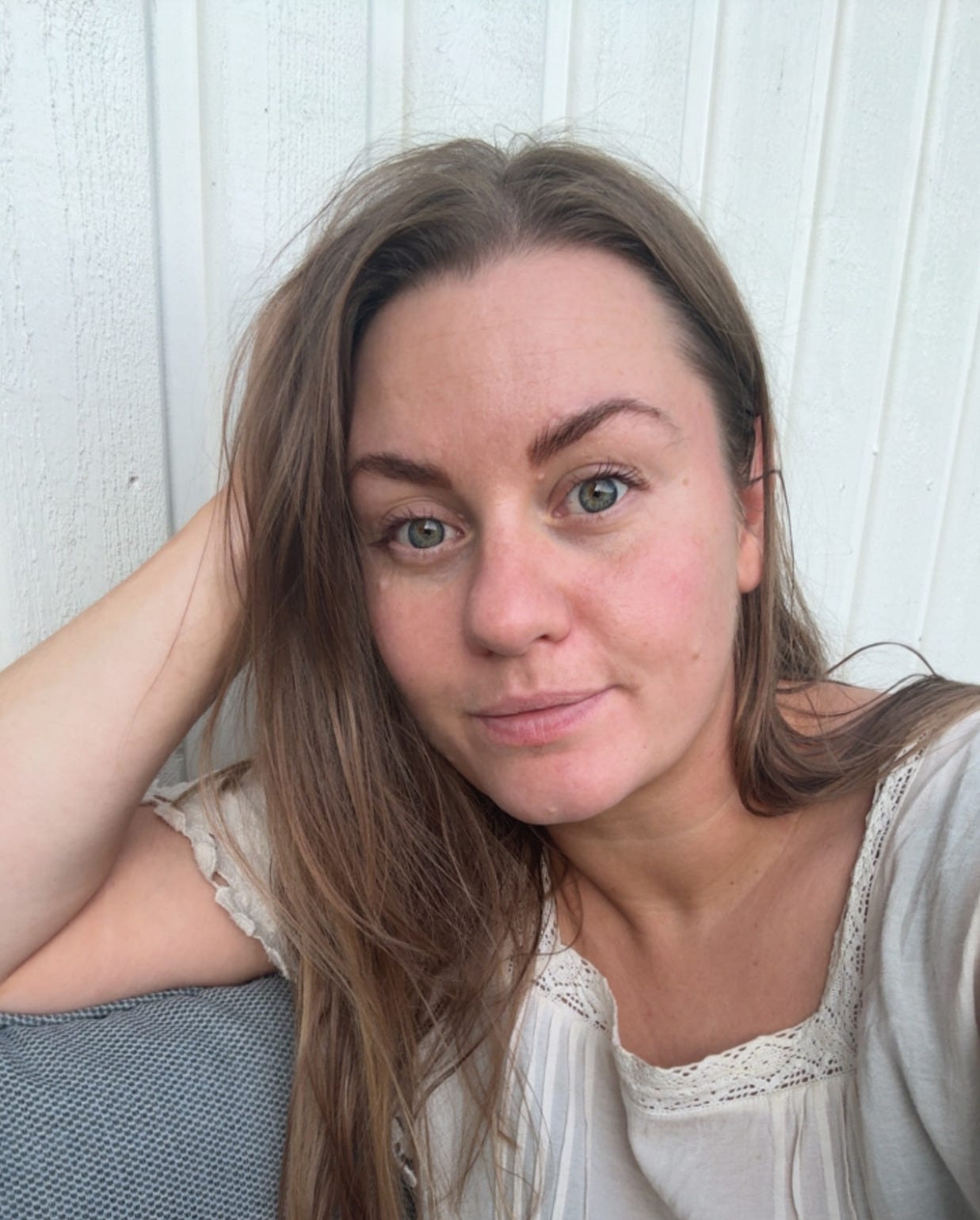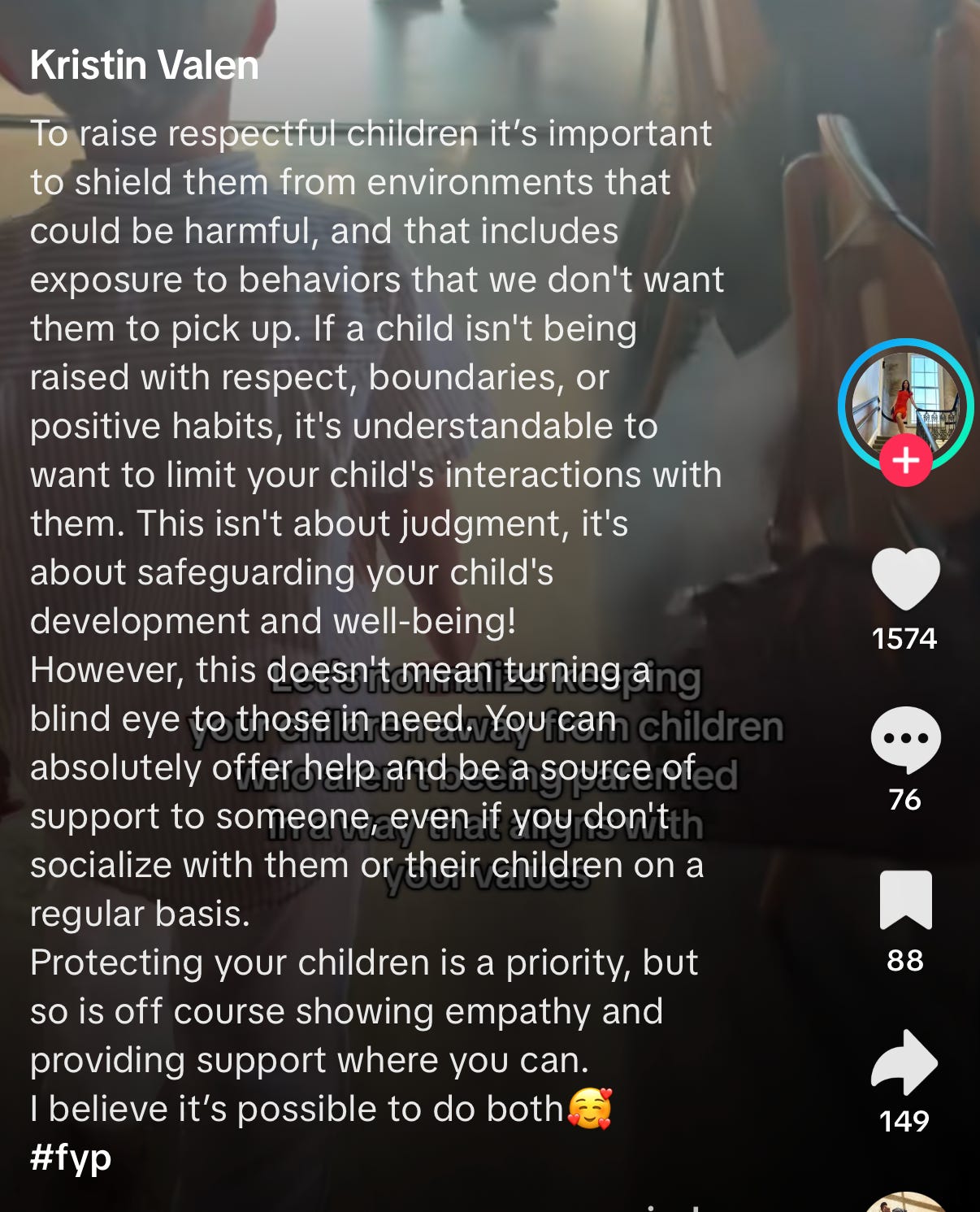A Relentless Spring, a Wheezing Breath, and an Old Wound
(And why one TikTok video set it all off)
Note: From now on, this newsletter will be published in English.
Many of you have followed me for years in Norwegian, and I’m deeply grateful for your presence. The choice to shift to English is not about leaving anything behind, but about opening doors. What I write about—motherhood, exclusion, social pain, and community—resonates far beyond language borders. If you're here, I hope you'll stay. And if you're new, welcome.
This spring has been the most intense I’ve ever experienced.
I was sick for two months. My son needed surgery. Both my children caught fevers and stomach flu. And I, as a special education teacher, had around 30 individual support plans to follow up on. On top of that, I launched and ran my own business. Right after Easter, I traveled to Sunnfjord to give a three-day lecture series. It was there I first felt my body resisting. I didn’t feel up to it. When I returned home, I became really ill. I’m still coughing. My chest wheezes.
And as if that wasn’t enough: I was sent to a substitute doctor who told me to take paracetamol—only for it later to turn out to be gallbladder inflammation that required surgery. This time I brought my husband, because I was simply too unwell to fight any battles. I ended up on antibiotics and opioids just to sleep.
In the middle of all that, I finally got an appointment for PCOS treatment. I learned I would have to start diabetes medication—for the rest of my life—to prevent cardiovascular disease, which runs strong on both sides of my family.
That’s so much that I said to my husband, “Isn’t it a bit amazing I haven’t collapsed?” Because, honestly—I probably would have just a few years ago. That level of stress would have plunged me into depression or a crisis.
But maybe it’s a sign that I’ve grown stronger.
Because I know what it’s like to live with depression. It was my companion for many years: from my early teens until well into my late twenties. I didn’t understand it for a long time—only after postpartum depression forced me to take a deep dive into my history did things begin to make sense.
Fleeing from Northern Norway
I grew up in a small community in Northern Norway, with a lack of reliable adult support. Many of my former classmates had completely different experiences—but I was one of those “misunderstood girls,” filled with internal unease, a lack of structure, and an inability to focus. I struggled with concentration. And this was at a time when it was still considered acceptable for teachers to shout at students who couldn’t keep up.
It shaped the entire environment. I fell between two chairs —not a troublemaker, but not a bright student either. As a result, together with another girl, I was frozen out of the football team by the coach and his wife. The parents around us didn’t grasp how important it was to include the children who were left out. Instead, we were pushed further away.
Being frozen out like that—that is one of the most painful and socially traumatizing experiences a child can go through. Bullying, in its many forms, followed me until I finished high school. With a GPA of 2.9, due to high absence, lack of teacher follow-up, and huge mental strain, I left without a diploma. That’s when I grabbed my handbag and impulsively moved to Oslo. I’ve remained in Eastern Norway ever since—here I’ve built my life and found my people.
A Leadership Course That Changed Everything
It wasn’t until I was almost done with my master’s in history that I was selected to represent Norway at the Soroptimist Nordic Leadership Academy in 2017. I spent a week on Öland in Sweden alongside representatives from Norway, Sweden, Denmark, Finland, and Iceland. There, we learned about female leadership, stigma around female leaders, networking, neurobiology, and how to dare to take up space. But also about social pain—and how it activates the same areas in the brain as physical pain, yet lingers longer. How exclusion can hurt more than being physically injured.
On the very first day, we were asked to develop a presentation about our personal dream to share at the end of the week. As we delved into the research on social pain, I experienced an emotional collapse. I was triggered at a deep level. Not just by being excluded by adults who should have nurtured me, but also by being frozen out by girls and chased by groups who had decided to hurt me physically. I was slapped, shoved into walls, threatened with being run over on the E6.
But the worst part? It wasn’t the violence. It was the coldness. The unpredictability. Never knowing who would speak to you tomorrow. Rumors were spread about me, and I never had the chance to defend myself.
That TikTok Video
That’s why I was so triggered when I opened TikTok the other day and saw a video from a Norwegian mother.
Her message was that we must shield our children from those who aren’t well-behaved or have challenges—to protect our children’s development. And I understand it. To a point. It’s natural to want to protect your children. But I feel a profound pain every time I hear adults talking about “those kids,” as if they don’t have parents trying. As if they don’t deserve inclusion. As if their presence is a threat.
Because that child—I was that child. Full of unease, intense feelings, and a heart longing for belonging—yet never receiving it.
The video followed a familiar rhetorical pattern in contemporary parent discourse: a blend of boundary-setting and moral philosophy framed as self-care and personal development. On the surface, it argues that we must shield our children from “bad influences,” which can sound responsible. But in reality, the video redefines community as a risk. By saying that certain children are simply “not our responsibility,” it shifts social responsibility from the community to individuals—and from adults to children. It echoes individualist self-help narratives: if something is too demanding, cut it out to preserve personal balance.
The sentence structure is simple and confident, communicated with calm authority, which bolsters credibility and emotional weight. Yet there’s an implicit generalization here: that children with challenges are threats to "healthy" children. There’s no clear definition of which children she’s talking about—vagueness that invites projection. Every parent will eventually face exhaustion or behavioral challenges from other children. But framing avoidance as a moral duty strips away something essential: the understanding that community requires effort, and that vulnerable children should never be seen as burdens.
Signy: "I’ve worked with children for nearly 17 years... and if you meant this the way it was phrased—with capital letters—then my answer is a big NO. Children aren’t responsible for the values their parents hold. On the contrary, they need a village that can offer what their parents might not be able to give."
Kristin:
"I know several teachers who are being harassed at work and who experience that children become just like other kids who completely lack respect and proper upbringing… Sure, it would’ve been nice to have that kind of village, but it no longer exists—except in fantasy."
“Village” Talk and Its Contradictions
What she added in the comments was even more revealing: “That village doesn’t exist anymore—except in fantasy.” She cites teachers being harassed at work and children “totally lacking respect and upbringing,” using it as proof that true community is impossible. This is rhetorically interesting: she conflates isolated incidents with a universal truth—an anecdotal fallacy turned into a critique of society.
Yet there’s a paradox: she claims to miss the village, but rejects it because true communities involve discomfort. What she’s asking for is not a village, but a homogeneous group of like-minded, conflict-free parents. But a real village—historically and socially—is never frictionless. It is a committed community where people with different resources and flaws are interwoven in mutual dependence. It’s not an ideal; it’s an infrastructure for social repair where vulnerability can exist safely. Declaring the village a fantasy because it isn’t friction-free reveals a profound misunderstanding of community’s true nature.
Why I’m Working to Rebuild It
That narrative hit me sharply—not only because I’ve been that excluded child, but also because I’ve witnessed exclusion’s toll on my students. I’m not saying this to shame the TikToker—but I’m critical of the message.
A village doesn’t fall into your lap; it’s created through collective effort and presence from engaged adults—all seeing the world beyond their own bubbles. From a teacher’s perspective, we often meet parents who treat their child as the only one that matters. They try to influence groupings based on value judgments. Those attitudes make our work far harder than it already is.
On that leadership course in 2017, I stood before a Nordic panel with trembling hands and shared my story. I cried and felt exposed—but I said this: my dream is to work for myself and lift women who’ve been through the same experience. Women who felt invisible, mistrusted, excluded. I want to build them up.
We heard stories of women who’d grown up in refugee camps, fled drug cartels, or lost parents—like I had the year before. We hugged, we cried, we held each other. It was the first time I truly saw the power of female solidarity. I had close friendships in the years after leaving Northern Norway—but always with a lingering fear of exclusion. Here, from day one, it was clear: community can heal.
I never imagined motherhood would lead me here—to motherhood studies and the frontline of maternal care.
Because the way mothers are treated today mirrors those same mechanisms: invisibility, degrading rhetoric, mistrust. And make no mistake—it is traumatic. Not just for individuals, but for whole generations.
Building the Future Through Motherhood
I truly believe—from the bottom of my heart—that the future must be shaped through mothers.
That means we never stop fighting for those who are left out. For those children. For those mothers. Because that is where the soul of society shows itself.






